Blogs

Lurking on social media the other day, I listened to colleagues discussing how to respond to a student paper in a philosophy class. The assignment was about our responsibilities towards (nonhuman) animals. The student argued that we can do whatever we want with animals because God has given us dominion over them. Presumably, he had Genesis 1.26 in mind, but none of the course readings mentioned Genesis—or God.People in the social media group had lots of suggestions on how to respond:Tell him that religion has no place in the classroom.Tell him that there should be no theist or atheist premises in academic writing.Just write “Irrelevant” in the margin!That last comment got a lot of likes, hopefully because people found it funny and not because they considered it good advice.The consensus was clear: Tell the student that appeals to scripture are inappropriate in college papers.I don’t think that’s good advice.My colleagues were ignoring something crucial. In this sort of situation, we can do deep damage to our relationship with our student and to the student’s relationship with higher education if we don’t tread carefully. Presumably the student who wrote this paper believes in God and the Bible. His religion will be part of his ethical decision-making going forward, and the Bible will influence his thinking and his actions.Bearing this in mind, let’s not tell this student that his thinking about right and wrong in class must be utterly divorced from his thinking about it outside the classroom.My advice would be: Before writing any comments, identify your larger goals. Here are mine:I want our class discussions to help inform my students’ thinking and actions about ethical issues, and in particular about whether it’s OK to do “whatever you want” with animals.I want students to listen when I try to teach them more things after this and I want other professors to be able to teach them even more things. If I reinforce a student’s likely skepticism about professors and religion, I make that harder.I don’t want my actions to increase the chances that my students go out in the world thinking of higher education as an enemy to religion and God.These goals suggest a different approach. Start by taking the paper seriously:Do you think that’s what the Bible means by ‘dominion’? Some people think so, but I've always thought it meant something more like ‘stewardship.’ I mean, God is the Father, right? So, I think of it like if your parents go out and put you in charge of the family dogs. If they come home and discover that you haven’t fed them or given them water, they’ll be mad at you.What do you think someone who doesn’t believe in God and the Bible would make of your argument? How would you persuade them? For instance, imagine that you’re talking to the author of our second reading or to the other kids in the class.I would count this encounter as a success if the student feels like I’m treating him and his religion with respect and if he realizes two things:“Dominion” could mean “stewardship” instead of “freedom to treat them any way I want,” and I need to think more about which one the Bible meant.I need to talk about this differently or I won’t be able to persuade people who don’t believe in the Bible.That’s a start. Much more has to happen before this student writes at college level. Later, I and his other professors will teach him more.It’s a very small step. Growth and intellectual development takes time. I probably won’t see the result of the learning process that I was part of. But occasionally I do.My greatest success story in this context is a student who came into my Intro to Philosophy class as a freshman, determined to prove that Christ rose from the dead. It was rough going, but by the end of the semester, his sources weren’t cringeworthy anymore, and he was presenting an actual argument. And he still trusted me. He majored in math but took Philosophy of Religion with me as a senior, and he explained that he wanted to continue developing his proof.I braced myself. But during the semester, the class discussed faith and reason extensively, and I was able to ask him (privately): Given that you think about faith as being the important thing, what makes it so important to you to prove that Christ rose? He thought about it for a long time and finally decided that he didn’t need to prove that Christ rose. Instead, he wrote a strong final paper in which he reflected on the meaning of faith, discussing his own experience and the course readings.I rarely get wins that size. But taking my students’ religious views seriously makes them possible.
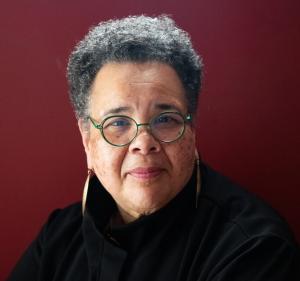
(An audio recording of this blog post may be found here.)One of the first requests I received in my new role as Director of the Wabash Center was to convene a group of “late-career” scholars. I said no. The friend requesting the workshop explained that they had participated in an early-career workshop, then a mid-career workshop. So, explained the colleague, it only stands to reason that, now, Wabash Center should host a late-career workshop. I said no. My rationale was that if late-career colleagues knew the richness of the workshop experience, then they should write a proposal and convene a group for one another. Now, in year five of this job, I have received the same earnest appeal many times from other colleagues in my generation. To each request, I have said no—until this past February.In February, over lunch in Trippet Hall, two colleagues carefully explained to me why Wabash Center needed to support late-career colleagues with a workshop. I listened. Somehow, I was persuaded by this encounter. I have begun to think about the possibility of convening the old(er) colleagues.In my wondering about this possible gathering, it quickly dawned on me that we have no meaningful name for “late-career” scholars. In the current system, being hired to a faculty position, moving through the tenure-track process and/or promotion, connotes early-career. The years after tenure and promotion connote mid-career. During the mid-career years some colleagues are promoted to full professor. Many colleagues remain associate professors for the rest of their career. Remaining an associate professor is not an indication of poor scholarship or poor collegiality. I do not like the terms “junior scholar” and “senior scholar.” Emeriti status occurs after retirement. With that said, what is the name of the vocational territory between mid-career and retirement? Why have we not identified this moment in our careers with a significant name that denotes the power of this season and so we can be aspirational? What if during this season of our career we are the best of ourselves and have the most to offer?I began to think that “late(r)-career” colleagues need a description or profile. So far—here is my profile: we would focus upon a gathering of senior scholars who know they are at their career’s apex. We would gather those who have been in the enterprise long enough to know what they know, including their limits. Those with an earned confidence would be invited. These colleagues are no longer ruled by their fears. They are comfortable in their own skin and in their own classrooms. They no longer feel responsible for supporting the status quo. They have a freedom in their professional life that other, younger, less experienced colleagues are not afforded or have not earned. They have garnered enough institutional goodwill and cache that they are able to take institutional risks—make good trouble—without fear of reprisal or retaliation. They recognize that depression, family obligations, financial challenges, health issues, and creative deserts have not had the last word. They have clear paths, practices, and habits for their generativity in teaching, research and discovery. They understand the teaching life as, paradoxically, contemplative and publicly active.They possess a feeling of being on the verge, which is exhilarating. They acknowledge and affirm the late season of their career, their success, who they have become, and the public journey they have undertaken. They are not narcissistic nor are they self-deprecating. Yet, they make time for early-career colleagues as a significant part of their scholarly duties. They are imaginative in their ways of mentoring, advising, counseling, coaching, advocating, allying and befriending younger colleagues.The truth is that even if we do not have a name for these people, we all know one or two of these folks. When I was an early-career colleague, several of these folks saved my life—more than once.These people are powerful, knowledgeable, and keep the community sane, somewhat healthy, and mission focused. These are the colleagues who have resisted becoming mean, embittered, or simply checking out of faculty life while still cashing the paycheck. These are the colleagues who save us from the bullies, the devils, and those who would haze us, even after tenure. They teach us with their actions how not to act entitled but be service-focused and humble.There should be a clear path to this season of a career. Early career colleagues should be aware of the power in this season. I have played with the following names:Elder scholars - for too many people the term elder connotes being elderly.Apex scholars - reminds people of being an apex predator!Apogee scholars – nobody other than physic professors get this reference.Sherpa scholars - has a kind of symbolism and resonance to the wider meaning of the aforementioned profile but lacks grit.Baobab scholars - makes use of the idea of gathering under the Baobab tree for wise counsel with elders in the African village, but do enough people know the tree?Synergy scholars - communicates that the work is about collaboration, interaction, and cooperation, but it sounds foreign to teachers of religion and theology.I am still working to name this season of our careers.In the meantime, here are the challenges. As an early career colleague, what will you do to aspire to this season? If you are in this peer-group, what will you do to move into connection with colleagues who are playing these roles and taking on these responsibilities? If you are retired, how will you support those still in the struggle? If you are an administrator, how will you recognize and celebrate the great work these folks provide in your school and for our colleagues?
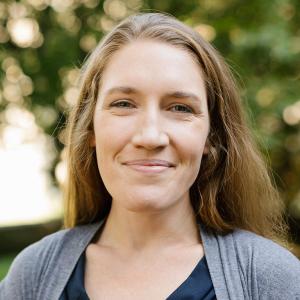
Teaching Introduction to the Hebrew Bible is one of the most challenging—and enjoyable—parts of my job. It shares some of its challenges with any other large humanities class: how to keep students engaged, reading closely, and asking sophisticated questions while they sit in a sea of their peers.Other challenges are particular to this course. I jokingly tell colleagues that I teach one of the only Gen Ed topics—the Bible—that students know everything about before entering the classroom. Which is another way of saying that it can be difficult to tap into students’ curiosity about a text they may know about intimately from other places. To be curious about a text is to be vulnerable to new ways of thinking about it and not everyone who walks into my classroom feels ready to be open in that way. Thus, while I assume that every student actually does have questions about the Bible, some are primed to offer only answers instead of queries about this text. This resistance may be due to the ideological heterogeneity of their peers, to the fact that my authority to teach derives from academic, not religious, credentials, or some other reason entirely. In any case, the large, nondevotional site that is the public university lecture hall can be a difficult context not only for students to stay engaged but also to unleash their curiosity about the Bible in the first place. The practice of Designated Respondents (DR), which I now use every semester I teach this 120-student course, does not resolve all of these difficulties. It does, however, generate conditions in which to address them by creating a framework for consistent engagement, inquiry, and connection. Practice Designated Respondents works in some ways like a sustained and structured “fishbowl.” Here is how I introduce students to it in the syllabus:Three times during this class you will be asked to serve as the “Designated Respondent” for a class meeting. This means that you will come to class more prepared than usual. I will look to you first to actively participate, respond to and pose your own questions during the course of the class. Try to speak at least once in each of your assigned sessions. If you are unable to attend one of your scheduled days, please contact me and I will assign you to another group. I divide students into six or seven groups (fifteen to twenty students per group) and begin the DR practice at the end of the second week of class, once enrollment has stabilized. For the first round many students are quite nervous to speak up. To help relieve anxiety, I open these sessions by asking students to pose their prepared questions about the reading, so they can get used to hearing their own voices. They can ask questions about anything. I only require that their questions: (1) invoke the assigned biblical reading directly; and (2) are put in terms intelligible to a broad, religiously-diverse audience. The goal here is to get students to slow down enough to let the Bible surprise them and then to make those surprises intelligible to students who may not share their guiding interpretive assumptions. I have found that after students speak up once or twice they gain confidence in this aspect of the assignment. Inviting students to sit towards the front of the room, if they are able, helps to mitigate the intimidation they may feel from speaking in a larger space.This practice means that I structure every class session around large questions and leave ample space for discussion. I put one or more of these questions on the opening slide for students to consider as they settle into the room. That way, more reticent students can contemplate and even prepare their responses in advance. EvaluationStudents assign themselves a grade for this aspect of class, though they can only assign themselves full points if they: (a) attend their assigned class session, (b) complete all the assigned reading for the day, and (c) complete the entire rubric.The self-evaluation rubric consists of the following questions:What percentage of the reading did you read in advance of this class?Describe two passages from the assigned reading that you were prepared to discuss.What two questions were you prepared to ask in this class session? Be as specific as you can, invoking the biblical text directly.Describe what engagement looked like for you during class.Out of 10 points, explain what grade you would assign yourself based on your answers to the above questions.It is worth noting that for some students, speaking in class is not just a strong disinclination but not possible or healthy. I work with students to create specific strategies for their voices to be heard during their assigned sessions. However, the evaluation rubric permits students who are not able to speak up to still articulate their questions, explain their engagement (which may consist entirely of attentive listening and active notetaking), and achieve full points. Results Some students truly hate this assignment. It requires them to read and to attend, and it strongly encourages them to speak in a large class. Each one of these components can be profoundly challenging. But many more students, while anxious at first, find their voices through this practice. Some have shared with me that it has empowered them to speak more in other courses as well. Here is how one student recently described it: “I really liked the designated respondents! At first I thought it was terrible, but after I did it and participated in the course, I found them really beneficial. I have thoughts and answers to questions every day in the class but I am always too scared to raise my hand (simply social anxiety!) but being told that I have to respond has helped me participate more in class.” This practice has helped me forge connections with a larger percentage of students and to better understand their interpretive questions and concerns. I have also seen it generate connections among students within the class. Speaking up in class is a vulnerable act and it encourages students to be curious about the Bible and about one another. I have witnessed students, who were otherwise strangers, linger after class to talk in response to what they raised in our discussion. Finally, DR prevents any one student (or handful of students) from dominating discussion. Hearing from a diverse range of voices (by semester’s end, nearly every student has spoken) makes our class more socially-connected than is typical for a hundred-plus person course.Designated Respondents is not a panacea for the problems of student anonymity, alienation, and disengagement that hamper many large courses. However, by creating clear structures for close-reading and active participation from a wide range of voices, it creates conditions for some of these issues to be assuaged.

With almost no leaves in the canopy above us, sunlight flooded the gently sloping hillside, penetrating and illuminating every open space in the leaf litter. My students and I had just spent some time—I don’t know exactly how long—inspecting a Dark Fishing Spider (Dolomedes tenebrosus) who was absorbing the warmth on the smooth gray bark of an American Beech (Fagus grandifolia). The spider—stretched out like a stereotypical beach bum—seemed to be enjoying the early spring warmth as much, if not more, than we were.“This doesn’t even feel like class,” one of my students exclaimed, taking a seat in the crunchy oak and hickory leaves. Indeed it didn’t. I had hoped for this.That experience was just one of countless precious memories during my first semester teaching Creaturely Theology in the spring of 2023. That course, an upper-level undergraduate theology elective, weds theological reflection on the more-than-human world, spiritual formation in nature, and biological and ecological surveys of the flora and fauna of Johnson University Tennessee’s campus.[i]In the fall of 2020, due to COVID risks, I began teaching outside almost exclusively. That experience brought immediate, unexpected pedagogical opportunities.[ii] While I continue to teach my regular courses outside as often as possible, “Creaturely Theology” has drastically enlarged my outdoor classroom. Now my students and I spend every Monday morning in the spring exploring the wild and hidden corners of Johnson University Tennessee’s 400-acre wooded campus. Increasing the physical dimensions of my “outdoor classroom” has required comparable growth in my pedagogical imagination and teaching repertoire.In this series, Creaturely Pedagogy, I will explore some of the exciting, life-giving lessons I am learning from my students, our non-human neighbors, and from the land itself through Creaturely Theology.All has not gone smoothly, I confess. The course has attracted significant attention, some of it negative.[iii] One social-media commenter, while generally supportive, called the course “lighter weight.” Every university educator and student has heard of the trope of the “blow off class.” Such courses ostensibly require little work on the part of students. They lack rigor. They are filler. Some even judge them to be a waste of time and resources.While I succeeded in creating a course that—at least sometimes—did not feel “like class,” it was not because Creaturely Theology wasn’t rigorous or intellectually challenging. I had to modify the schedule because of the density and difficulty of the required readings! The very distinction between serious and unserious courses, though, provides occasion to evaluate the ideals and goals of university education generally, and religious and theological education specifically, in our moment.In the recent past—with effects still relevant to the present—Western university education has idealized theory, technical content, control, and the abstract. In a word, education and competency have been equated with “mastery.”[iv] But none of the current educational disciplines that exist in university contexts today, not even the so-called “hard sciences,” can deliver mastery over their subject matter. In each there is an almost incomprehensible amount of material to examine, and new developments and discoveries happen all the time, even in the humanities, and, perhaps most shockingly of all, in theology! Education must involve developing competencies to think, speak, and work humbly and responsibly in a complicated world. And the work of coming to think and speak well about God and all things in relationship to God is rather involved work, after all.As readers of this blog know well, all human knowing is embodied. There is no human learning without sensation, and consciousness never happens untethered to underlying neurology and neurobiology. All learning involves feeling. All loving does, too. Creaturely Theology has allowed me to combine high-level theological reflection with unforgettable, hands-on experiences in the more-than-human world.In my forthcoming blogs in this series, I will often emphasize the importance of sensation and feeling in the work of theological reflection and learning. Future entries will explore the themes of naming, risk and fear, departures and arrivals, and ritual. I hope you’ll follow along.Notes: [i] Initial funding for the course came from the Science-Engaged Theology course grant competition in the St. Andrews New Visions in Theological Anthropology project, funded by the John Templeton Foundation.[ii] In a previous blog series, I shared some of the things that I had been learning from teaching outside.[iii] See “Johnson University’s New ‘Creaturely Theology’ Course Stirs Controversy.”[iv] Note Willie James Jennings’ salient critique of “mastery” in After Whiteness: An Education in Belonging (Grand Rapids, MI: Eerdmans, 2020).
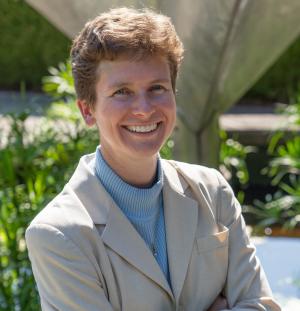
My absolute favorite way to teach is sitting around a camp stove on a bed of pine needles with students eating mac and cheese and laughing about the day’s challenges. If I’m lucky, my favorite wool socks are on my feet and the hat my friend Tess knit for me is on my head. If I’m really lucky, the students have moved from “That canoe carry was so hard!” to “I was thinking this afternoon about the point Belden Lane makes in the chapter on struggle as teaching us attention and indifference…”As much as I enjoy taking students outside for my regular semester classes, taking them through immersion courses—usually a week backpacking, sometimes canoeing—is a whole other level. All the good that happens in an outdoor session on campus is enhanced by being outdoors for a whole week or more. Students forget that they’re in class, become curious, and learn rather than ask me repeatedly if they’re doing the paper “right.” Students are less distracted on these trips, more able to focus on readings, reflections, experiences, each other. We all feel like we’re getting away with something, and we play, which makes us even more curious and open to learning. We are all more alive in the world. My teaching and my students’ learning becomes more attentive, more responsive, more active, more unpredictable in the best ways because that’s the reality of life on the trail: wild, unpredictable, active, requiring attention and response.All of these things happen, but for this post I’ll focus on just one aspect of the immersive experience: how present students become and how much that positively affects their learning and, more significantly, their lives.Two aspects of immersive outdoor trips especially facilitate students’ presence in their own lives. First, the places I backpack with students usually have no cell service, and I take their phones anyway, requiring them to go screen-free for the duration of not just the trip but the Jan-term (three weeks). Many of us make rules about devices in our classrooms and enforce presence for three hours a week, but imagine how the extended absence of their devices, the immersion into the non-virtual world, brings students into a more sustained experience of attention and therefore a deeper experience of presence. Students are not distracted by people who are not physically present. They cannot spend time staring at a video, leaving their reality behind. The things that distract them from their learning must be more interesting than those on a screen. Students tend to be much more engaged in their reading and read with more focus and depth on these trips, too! Without the numbing kinds of distraction available, students find themselves paying attention to their world and their community—each other. Their minds might wander, but they wander in ways our minds were meant to wander, making connections and noticing the world and the people around them, discovering the humanity of others and reaching out to meet needs they wouldn’t otherwise notice. They may even perceive internal movements of their own souls.The other aspect of the immersive trips that makes students so present is the pace of the trail. We are only ever doing one thing at a time. We’re hiking or sleeping or cooking or eating or playing or sitting around a campfire with one another, but never two of those at the same time (well, we can eat and do most of the other things at the same time, but these are undergraduates we’re talking about). Those are also the only things we do each day, every day, day after day. The pace and the rhythm slows us all down. We can focus. There is nothing vying for our attention. We just have to walk awhile, attend to our feet, attend to the person beside us.What happens when students are present, then, is an exponential increase in learning. Imagine conversations that last longer than thirty seconds because students have read deeply and brought questions and thoughts about the text. Imagine real conversation with real listening to one another and building ideas together because they are not wondering in the backs of their minds about who is texting them or what other conversation they are missing out on. Imagine a full day to ponder and digest the ideas of the previous night, a whole week for the course material to sink deep into students’ bones as they engage it with different people in different conversations over and over with nothing else to do but go for a walk and chat about it.Perhaps backpacking with students is not an option for you, but I imagine some kind of immersive experience is. Could you require a weekend retreat without phones and with a manageable amount of reading you do while at the retreat? Could you schedule even a single day immersion with students? Could you take them to a museum, take their phones, and give them a single task they have to do for several hours, slowly? Could you assign them a weekly meal where they have to be present to one another? May you find your immersive classroom and come to know your absolute favorite way to teach, with or without the wool socks.
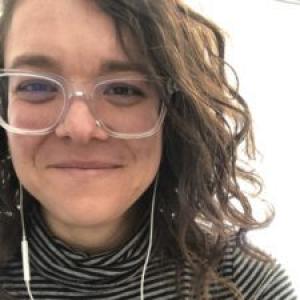
I finally went to my primary care doctor the other day and proceeded to unload about three years’ worth of pent-up ailments upon her. I'm losing my hearing! Do I have early-onset dementia? My right knee hurts! Can you test my thyroid? I think I have diabetes! What is this weird bump? My pinky is numb! Is my heart rate normal? Am I a hypochondriac?! This poor woman.I’m pretty sure she diagnosed me with a very serious condition called… “aging.”I’m turning forty this year and suddenly, it seems, I find myself routinely waking up at four a.m., taking a handful of vitamins with breakfast, and grumbling about “kids these days.” The skin on the back of my hands has turned to crepe paper. The other weekend I didn’t go watch a friend’s band play because the show started WAY too late. Readers, it started at nine p.m. I fear it can no longer be denied: I’m getting older.It’s not that I don’t spend time thinking about bodies, including my own. I’ve read books such as Minding Bodies: How Physical Space, Sensation, and Movement Affect Learning (Hrach, 2021). I teach courses on disability and race—two classes in which the body comes up a lot. I emphasize to students that religion isn’t just about beliefs; it’s enacted and embodied amidst a material world too. I know I need a snack in the middle of my Mon/Wed 9:35-10:50 a.m. class or my stomach will let out a series of plaintive whale songs. I’ve dealt with decades-long injuries. I’ve suffered from long COVID. People I love have died. But, oddly, I haven’t thought all that much about aging, or its relationship to my work, until more recently.Part of this odd oversight may be that aging is pretty embarrassing sometimes. Kids can literally fall out of a tree, get up, and walk away just fine; I can pull my back, and need to take it easy for a week, because I reached too far trying to plug in a lamp. This isn’t exactly the kind of story I want to broadcast at the monthly department meeting. Part of it may be that it’s hard to admit, perhaps even to fathom, just how much our lives are affected by this “meat suit” (as my yoga teacher calls it) that is only ours temporarily. Part of it may be that professors tend to work late into life—and so aging doesn’t seem all that relevant to my professional world. Part of it may also be that, because faculty are constantly encountering a turnstile of younger people in our classes, it may be easy to forget we ourselves aren’t forever young. I still feel only a few years older than my students (especially whenever I can sense the presence of free pizza nearby). Part of it too may be that we fancy ourselves living “the life of the mind”—even if it’s a big lie or hell, for a lot of us—and the mind can seem ageless (though the other day I stood in front of my bathroom sink and couldn’t remember which handle was for hot, so….). Part of it is denial, I’m sure.Aging brings up a bunch of considerations—and not just about the indignities and rebellions of a body I can no longer (could not ever?) control. How do I continue to do this work well when my mind is no longer as sharp as it once was? (And what does “well” even mean? Perhaps such notions change over time….) What do I have to offer to my colleagues and students, now that I am no longer fresh out of school? How do I make my own meaning, when the milestones and achievements of the earlier years (e.g., get a degree, get a job) have passed? How can I stay relevant in a rapidly changing world, around those same youths I mentioned above? How can I remember where I put my glasses?!? What are my new goals, what am I aiming toward, where is the forward momentum coming from now? How do I tap into the wisdom of mentors and others who have been through this time and these transitions before me? How do I learn to live with the losses, both personal and professional, that accumulate? How do I stay excited about doing the same thing, for semesters on end? Are there really ways to beat or stave off mid-career malaise or the midlife blues? How do I do *gestures around* all of this for another several decades? These are tough questions to contemplate and I don’t have the answers yet. I’m not sure I ever will.Some of you are probably chuckling to yourselves. What I wouldn’t give to be 40 again, you might be thinking. Yet difficult wonderings can come for us at any age or stage in our career. I’m remembering a quotation my mom, who has since passed away, sent to me once: “Sometimes when you’re in a dark place, you think you have been buried. But you’ve actually been planted.” Now, maybe, is a time to grow.

Playin’ Mas’ – Intertextual Oz As a person of Caribbean heritage and a scholar of Caribbean and African Diasporic studies, I see elements of Trinidad and Tobago’s carnival in accounts of Geoffrey Holder’s approach to envisioning The Wiz. It was Holder’s costuming, first iterated in sketches, which led to the choreography and storytelling of the The Wiz. As in the tradition of “playin’ mas’” (playing masquerade), movement, music, and costuming are intimately connected. The look and construction of the costuming plays a large part in determining the movement. The cyclone which whisked Dorothy away could be conceptualized as Oya, the Yoruban orisha of the whirlwind and guardian of the cemetery. This reading brings a sensibility to the Oz myth which opens it to other possible readings of text in context. Here, I am thinking about the tragic real-life history of1 expansionist national policies towards “western” landscapes in the late nineteenth century which saw the displacement of Indigenous people. While Baum’s narrative does not overtly touch on this aspect, Oz is peopled by different sorts of beings vying for sustainability given the tyranny of the wicked witches.This musical theatrical production was adapted as a film in 1978 with the same name, The Wiz. Plot elements were adjusted to accommodate an older Dorothy, now a teacher, played by Diana Ross. Set in an urban landscape, Dorothy’s snow cyclone travel to Oz lands her in a dystopian New York City. The Scarecrow, played by Michael Jackson, delivers a powerful lament about injustice in a new song introduced in the film called “You Can’t Win.” The song “Home,” like its parallel “Over the Rainbow,” is the movie’s emotional heart and center followed by Lena Horne’s Glinda the Good’s impassioned anthem for self-awareness, “If You Believe in Yourself.”The Wiz reboot of 2024 features a younger cast in which Dorothy’s companions on the Yellow Brick Road are her peers in age. In media interviews director Schele Williams noted that Dorothy, played by Nichelle Lewis, finding community with similarly-aged companions is relevant for a twenty-first-century social context. Williams sees the finding of one’s group of affirming and encouraging peers as a central task of contemporary life.What does it mean to teach the mythos of Oz twenty-five years after I first contemplated doing so while designing a course which I introduced in 2000? Twenty-five years ago, I focused on how Oz represented changing geographical and cultural landscapes at the turn of another century. The movement from a mostly rural population to more people living in cities was a salient feature of the late-nineteenth and early-twentieth century in the US. Oz, a prison drama television series of the same name was also popular during its six-season broadcast from 1997 to 2003. Where was “home” for incarcerated persons?As a class, we discussed the hero’s journey with reference to the work of Joseph Campbell and its relevance for science fiction and fantasy narratives including Star Wars (1977) and The Matrix (1999). The course contrasted this search for home with diaspora identities and religious traditions where the search for home complicates Dorothy’s assertion that “there’s no place like home.” Other retellings include Geoffrey Maguire’s 1995 Wicked: The Life and Times of the Wicked Witch of the West, which is based on both Baum’s 1900 novel as well as the 1939 MGM musical. A Broadway musical called Wicked based on Maguire’s book premiered in 2003. Here the Oz mythos is retold from the point of view of a character who is usually positioned as Dorothy’s arch nemesis.The Oz mythos remains a rich field for exploration in religious studies classes. It is still eminently teachable today. The text’s multiple and continued readings and reinterpretations, across a variety of genres, make it especially suitable for study. Students are exposed to the concept and practice of intertextual reading, and to the subfields of film and religion and visual cultural studies. These in turn allow for the study of shifting cultural signifiers and the enduring legacy of powerful stories. Teaching Oz in the twenty-first century allows for continued exploration of the meaning of home, community, and individual and collective journeys in an ever changing and shifting geographical and cultural landscape.There are many metaphorical yellow brick roads. I would want students to explore North American S/F (speculative fact and fiction) and fantasy literatures and their intersection with religious studies. Situating Oz as an important (although certainly not the only) origin point for fantasy literature in a North American landscape including its tensions, contradictions, and continued troubling legacies would be a richly rewarding teaching and learning experience. Oz should be put into dialogue with the texts of Octavia Butler, for instance. In my past teaching, I taught Oz alongside the imagined worlds of Star Wars and the emancipatory visions of Rastafari. Teaching Oz opens possibilities for journeying through visual and textual studies and exploring their meanings in comparative contexts.

An audio version of this blog post may be found here.It was the first morning of my vacation. The restaurant at the resort had a waiting list for breakfast patrons. The hostess took my phone number and said I would be called when a table opened. I thanked her and walked to find a comfortable spot in which to wait. Not far from the dining room, guests could choose to linger in any of three adjoining rooms--the bar, lobby, or library.I chose to wait in the library. The room was ringed with mahogany shelves carefully adorned with books and creative objects. Statues, framed paintings, and board games were on display. The room reminded me of magazine covers from Architectural Digest or Good House Keeping. The many chairs and couches were positioned to invite guests to linger in small groups, or to simply sit and read. I picked a chair facing the wall of windows. The windows provided a view of the sprawling pasture setting. I noticed a scrabble board was set on a table near the windows and a chess game was set at another table near the entry door. I, indeed, felt as if I was visiting a friend or relative’s home.As I waited, not because they were loud or intrusive, I overheard a grandfather teaching his grandson to play chess. The boy was about six or seven years old. With the grandfather seated on one side of the board and the boy, kneeling in the chair on the other side, the granddad invited the boy to make the first move. As they played, the grandfather patiently explained the way the boy might move varying pieces. Several times, he encouraged the boy to consider a strategy. At the end of the game, the grandfather showed the boy how to reset the board for the next people who might want to play. I overheard the grandfather say he had taught his daughter, the grandson’s mother, how to play chess when she was about the same age as the boy.Even when I am on vacation, I am thinking about and identifying teaching moments. This tender teaching moment between grandfather and grandson was poignant, delicate, and beautiful. It was not extraordinary. Its beauty was in the ordinary occasion of a grandfather taking time, one-on-one, to play with his grandson.Some of the best, most tender, teaching occurs one-on-one.Classrooms can be marvelous arenas for superb teaching. Classrooms can be sites where the relationship between instructors and learners transforms. Equally ripe with possibility and beauty are the one-on-one relationships between faculty and students which happen beyond the classroom. Teaching students in one-on-one modes has the potential to assist students in ways that the classroom encounter cannot. The opportunity of a sustained conversation with one student can sometimes lead to a long-lasting, life-changing connection.While I was on a faculty, with intention, as part of my teaching agenda, each year I chose to work with a student teaching assistant (TA) and a student research assistant (RA). I considered these relationships with students as key to my teaching responsibility as the courses I taught in classrooms.My practice was to meet weekly with each of the two students to facilitate our prescribed tasks. Then, once a month, if the students were interested, I would convene them for a meal to discuss larger theological issues, hear how they were managing in the day-to-day reality of graduate school life, and encourage conversation about their occupational aspirations and dreams. My aim for these one-on-one relationships was to aid their health and success.I honed my listening skills by teaching one-on-one. Spending time in one-on-one conversations allowed my primary focus to be on the questions, curiosities, abilities, and perspectives of the student. These one-on-one relationships allowed me to make stronger recommendations for further graduate study, employment options, or give my opinion about life’s unexpected twists and turns. A regular dimension of this kind of teaching was when I was able to write very considerate, in-depth, letters of recommendation for my students because I knew the student as a person and not just as a student who had done well in my class. Occasionally, if there was trouble, my relationship with the TA or RA allowed for convincing intervention or advocacy.My practice of intentionally constructing ways of working one-on-one with students comes from my own experiences in graduate school. When I was in graduate school, the professors for whom I was their TA and RA became my career-long mentors and friends. The three-faculty people who I worked closest with in graduate school have been influential in guiding my entire academic career.Recently, I referred one of my current mentees to my mentor for guidance on an issue for which he had expertise. I told my mentee that I was putting them in touch with their “grand-mentor.”Through these connections I know I am a better teacher and colleague. Last week, a mentee who serves on a university faculty and just received tenure, called me and asked me to talk with one of their doctoral students. I was delighted to assist. Just like grandfather was so glad to teach grandson, I am overjoyed to reach out and support a student of my student.

I remember dial-up modems and the exhilaration of logging onto AOL.com as a teenager. A few years later, I experienced the novelty of Facebook. Duke Divinity School (DDS) advised all of its masters’ students in the 2008 incoming cohort to create Facebook accounts so we could stay connected and support one another through the first year of our graduate program. DDS recognized that this would be a time where students begin to deconstruct presupposed understandings of religion, Bible, and the theologies that we had received from our families of origin and church contexts. Reflecting back on that time, I feel as if the beginning of my deconstruction was wed to the rising age of social media. Now as a professor of the New Testament in the age of social media, what should some of my best practices entail? While difficult to define, the term “social media” identifies the various internet applications that allow users to construct their profiles while also creating content that connects and networks various groups of people. While social media is supposed to be about “connection,” I imagine that we all have experienced “internet trolls,” folks who try to bait and upset readers with disturbing comments. As professors of religion and theology, I would argue that we are the prime targets for internet trolls just by virtue of the nature of our work at a time where there seems to be rising White Christian nationalism in the United States. So, I often ask myself questions about the role of the professor in the age of social media. For example, in my context, our Director of Outreach and Alumni Relations requests that faculty increase their social media presence as a way to connect with alumni who are out working in the world. Can I carefully curate my social media presence to let those alumni know that I support them from afar? As a professor, what content can I create that allows alumni to be refreshed as they do the difficult work of leading congregations and parachurch ministries? Moreover, can social media serve as a way for faculty to connect with prospective students as we all experience the feelings of scarcity in theological education? Is this another area of “service” that faculty can add to their tenure portfolios (assuming one has a job with tenure!)? While I am not sure of the proper answers to the above questions, I certainly try to be cognizant of what the next generations of theological students may look like. Gen Z, for example, born between 1997 to 2012, is the first generation to have grown up with ALL THE TECHNOLOGY. Further, they will buy products from social media sites more than any other generation. Is there a way for Millennial, Gen X, and Boomer faculty to capitalize on connecting with Gen Z through social media? I think that is a conversation that must be had in our various theological faculties. I started @BoozyBibleScholar on TikTok and Instagram, providing segments called “One Minute Womanism” and “Scripture Through Womanist Eyes” as a way to show my growing community that there are other voices besides the conservative right-leaning interpreters of scripture. Now, I will definitely not be keeping up with the latest TikTok dance trends, but I will add my own particular voice to the ever-growing vacuum of social media to provide a brave space for the folks who may be feeling left behind and kicked out of Christianity. Just as in the opening of this reflection I recognized my own deconstruction during the rise of the social media age, I imagine that Gen Z experiences similar deconstruction(s). As I peruse social media, it seems to me that the loudest voices in Christianity today tend to be destructive voices. If you have pondered a desire to help silence those destructive voices, I implore you to act now. Find ways to make your scholarship available to the public. I wholeheartedly believe that one of the professor’s jobs in the age of social media is to be a transformative voice in contrast to those who will try to tear people down. Instead of letting John Piper, John MacArthur, or Voddie Bauchaum be the loudest voices in public religious discourse, professors of religion and theology owe the American public counter voices in the age of social media. My hope is that my social media presence will at least point some to believe that there are other ways to be “Christian” in a world that has vastly devalued such an identity. TikTok: @BoozyBibleScholar and Instagram: @BoozyBibleScholar
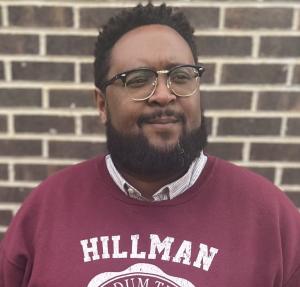
I am not a scholar of Religion or Theology. However, my work as a creative writer and professor of Creative Nonfiction often involves identifying everyday divinities; finding the sacred in small things, the flawed, and the profane. Many of the readers/contributors to this blog might recognize my name as a kind of curator for this space. I serve the Wabash Center as an Educational Design Manager, a job that has brought me great opportunity to learn, share and reflect approaches to teaching and the teaching life. When I became aware that one of our blog publishing dates would fall on Juneteenth, I wanted to take the opportunity to write about it and perhaps encourage others to learn and teach more about the subject…Juneteenth: What is it?June 19, 1865: Gordon Granger of the Union army arrived in Galveston, Texas, to inform enslaved African Americans of their freedom and that the Civil War had ended. General Granger’s announcement put into effect the Emancipation Proclamation, which had been issued nearly two and a half years earlier, on January 1, 1863, by President Abraham Lincoln.Juneteenth is an annual commemoration of this event and the end of slavery in the United States after the Civil War. It has been celebrated by African Americans since the late 1800s. It is the longest running Black holiday. Also known as Freedom Day, Jubilee Day and Cel-Liberation Day.The day was first recognized as a federal holiday in 2021, when President Joe Biden signed the Juneteenth National Independence Day Act into law after the efforts of Lula Briggs Galloway, Opal Lee, and others.I grew up knowing nothing about Juneteenth. This history was not taught to me in my public schools. I first became aware of the day and its significance in college, thanks to my first African American literature professor, and the book by Ralph Ellison. When I heard the story, I was angry. Understandably, I think. The idea that slavery in the United States continued quite a while after the Emancipation Proclamation was deeply frustrating. But I was also upset with the fact that this event seemed whitewashed from my education. Why wasn’t this major moment in African American history discussed every Black History Month? Why wasn’t this made a part of the curriculum I was given?Another part of me was unsurprised. As a Black person in America, I am familiar with the ways my homeland can defer its promises of equality, and how inconvenient histories can be overlooked in order to affirm narratives of American exceptionalism. The story of Juneteenth complicates our understanding of the Civil War, Lincoln’s legacy, and the 13th Amendment to the U.S. Constitution.I wouldn’t encounter Annette Gordon-Reed’s Juneteenth until I was a teacher myself, assigning it to myself and my graduate students to read together. Together, along with other supplementary texts, we’d learn more details about the factors which led chattel slavery to continue in America years after it was said to have ended…States with little or no Union Soldier presence refused/ignored the order to free enslaved people.Border states, including Delaware, Maryland, Kentucky and Missouri, and of course Texas, ignored emancipation.Slave owners threatened to kill slaves if they tried to leave. Some slavers moved to Texas to keep people enslaved. Galveston, Texas was the last stronghold.The Emancipation Proclamation didn’t apply to Indian tribes. The five “Civilized Tribes” (Cherokee, Choctaw, Muscogee, Chickasaw, Seminole) owned Black, Mixed and Indigenous slaves. Chattel slavery among these tribes was not officially ended until 1866.These factors demanded considerable time and effort to navigate and prompted questions that were uncomfortable for the learners and for me as well. But I believe more was gained by engaging with Juneteenth in the classroom—a greater understanding of ourselves in relation to our citizenship, our communities of belonging, and one another.I wish I had the opportunity to have learned about the event sooner in my life and more often throughout my matriculation through academia. Even if it would have been awkward at times. I wish to have been able to observe this commemoration of freedom earlier, and the chances I might have had to unpack its significance with teachers and fellow students.There is no real discussion about freedom in America that does not invoke the lived experience of Black people. As the poet Terrence Hayes suggests, Black people share a historical and constant relationship to freedom. To take this further with a question: in lessons about the liberation found through God’s grace—the freedom from fear discovered in faith and divine will—why wouldn’t we center the lived experiences of a systemically subjugated population? Why not ask students to engage with a moment that signifies a turn toward a more moral universe? I would like to make a case for making Juneteenth a point of discussion in classrooms across all fields of study, but especially in theological and religious education with its potential to position scholars who lead communities and shape public thought. There is so much to be gained in the teaching of Juneteenth.Here is a resource, a Juneteenth Reading List cultivated by the Smithsonian’s National African American History Museum: CLICK HERE. As we consider how we might craft lessons around this holiday, making sure to read as much as we can on the subject feels imperative.If there are readers who have had success teaching Juneteenth and would like to share a reflection on their experience, reach out at quistd@wabash.edu.
Categories
Write for us
We invite friends and colleagues of the Wabash Center from across North America to contribute periodic blog posts for one of our several blog series.
Contact:
Donald Quist
quistd@wabash.edu
Educational Design Manager, Wabash Center
Most Popular
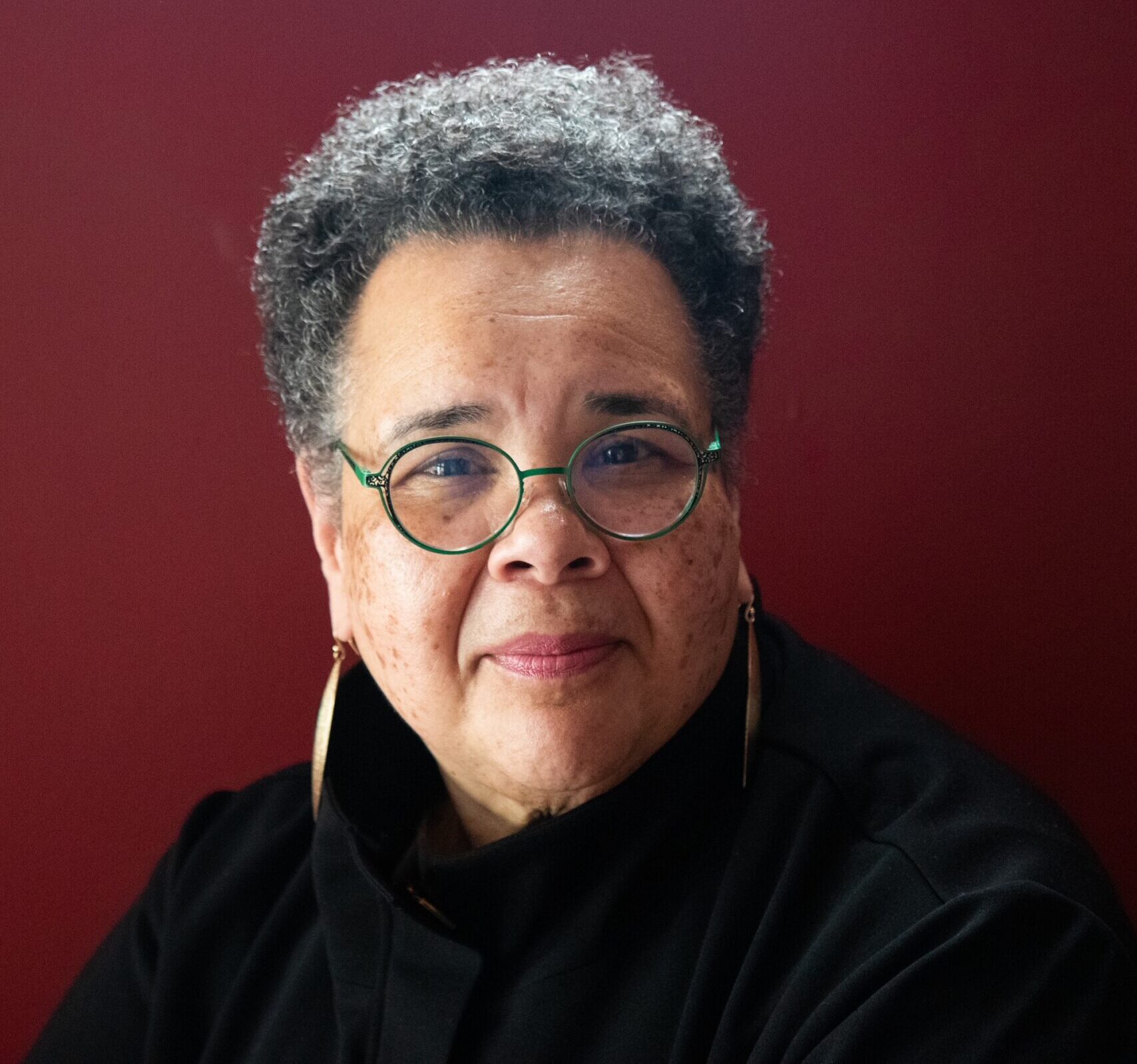
Are You Okay?
Posted by Nancy Lynne Westfield, Ph.D. on October 1, 2025
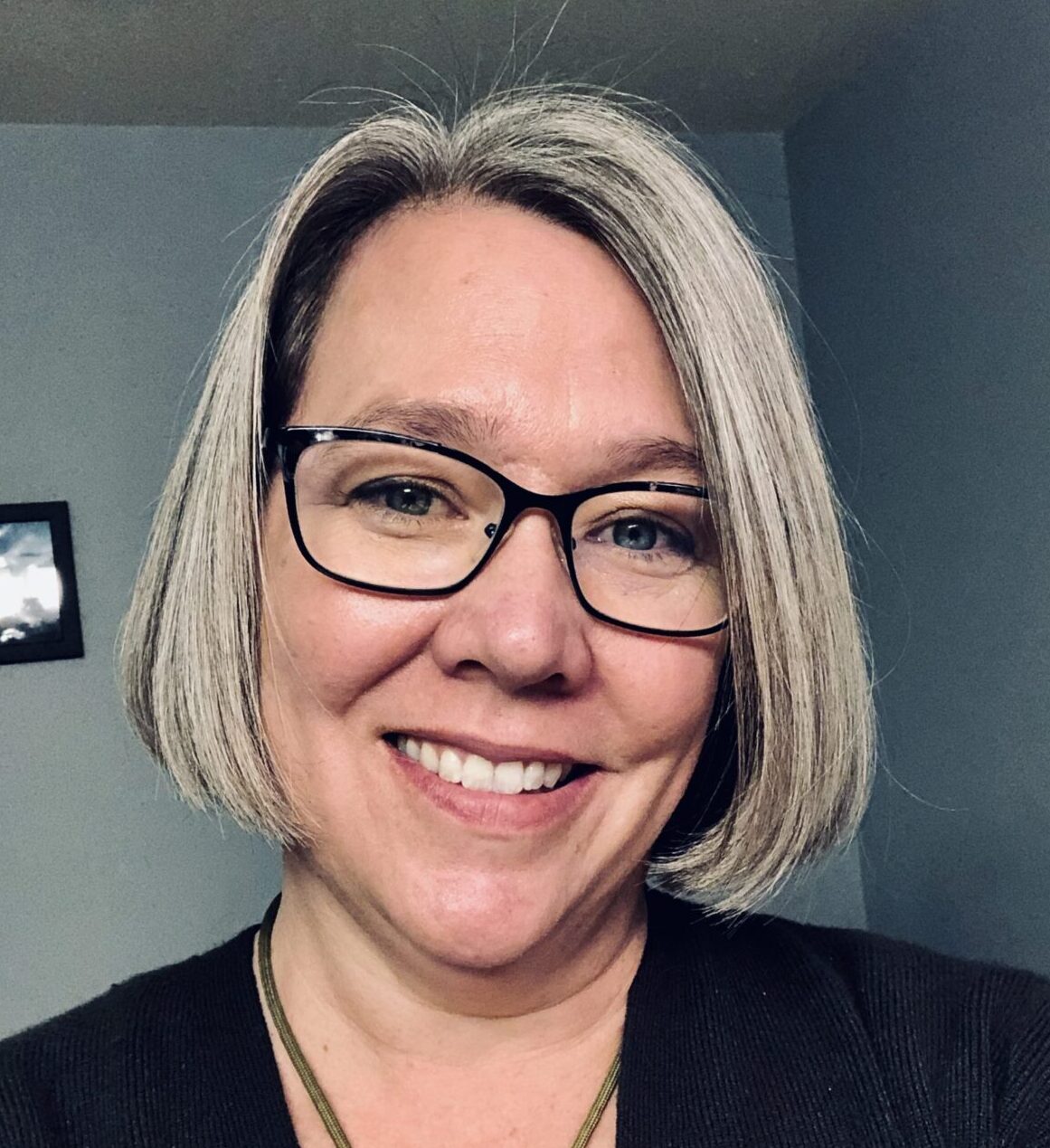
On Plagiarism and Feeling Betrayed
Posted by Katherine Turpin on October 27, 2025

Executive Leadership Involves New Questions
Posted by Nancy Lynne Westfield, Ph.D. on December 1, 2025
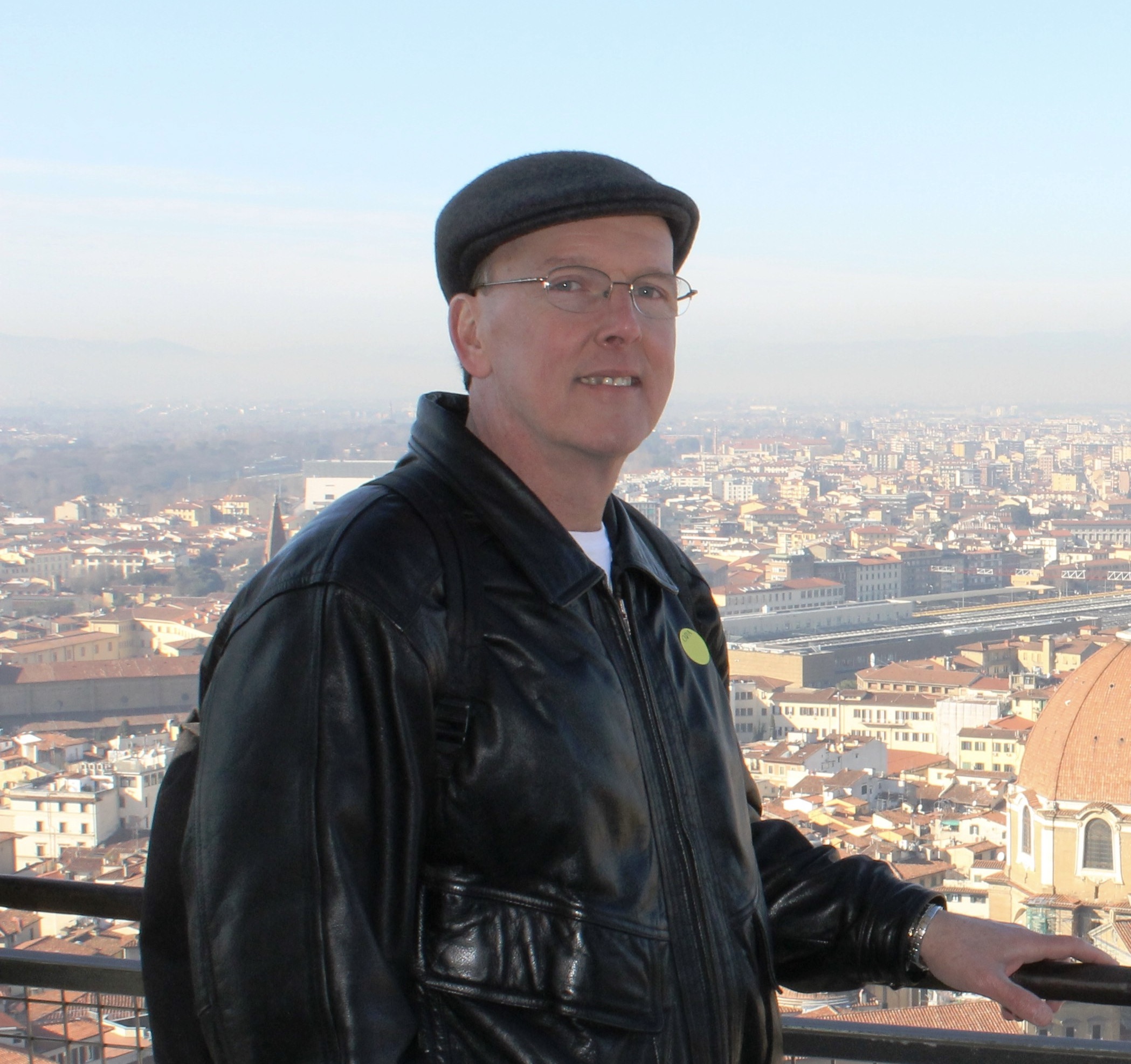
Embracing the Imposter Within
Posted by Fred Glennon on September 15, 2025

Xenophobia
Posted by Daniel Orlando Álvarez on October 15, 2025